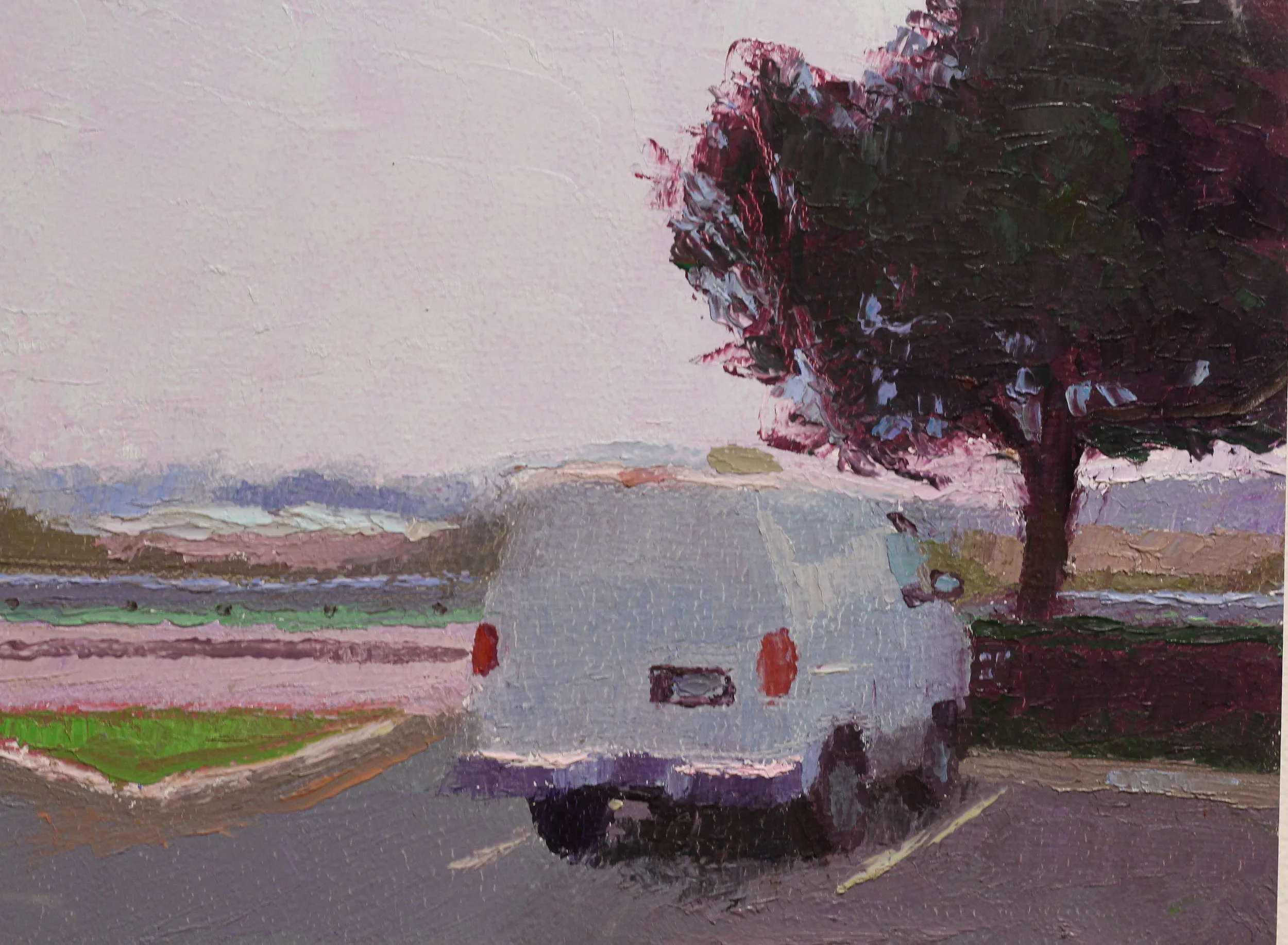Jimmy Miracle, A Story Teller
Jimmy Miracle: Color Notes, Architectural Foundation of Santa Barbara
By Tom Pazderka
When I was still the artist in residence at the Red Barn at UC Santa Barbara, I remember a conversation I had with a colleague about the new incoming graduates, one of which was Jimmy Miracle. The colleague was clearly amused as he described what was happening. “They don’t know what to make of it,” they said, referring to Miracle’s paintings and style. “He doesn’t fit in there. Goes out and does plein air paintings...” Evidently the trouble was that Miracle’s work at the time wasn’t conceptual, edgy or clever, it wasn’t experimental (in the sense of taking risk with content), it wasn’t trying to be new, performative, intersectional, didactic, and so on. It wasn’t any of those things that are now an entrenched part of the academy, and it didn’t pay lip service to any of it either. It was in a sense edgy, but retroactively and without seeming reactionary.
This was my introduction to Jimmy Miracle’s painting. Eventually, I went to the open studios and saw the work first hand, lined up on small makeshift shelves on the wall. There were dozens of these, tiny and colorful, almost miniature paintings—a parking lot here, a tree there, the beach, a mountain scene or two. They looked like Sunday paintings, but better, more considered and above all, they seemed contemporary.
What separates Miracle’s paintings from the run of the mill Sunday painter or the professional landscape artist is that the handling of color and subject matter is more nuanced. Miracle has an eye for placement of figures, color usage and atmosphere, unlike many of those milling around in the trade. There are some misses, as is the case with most art, but when the painting is good, it’s really good. Miracle knows his colors well and knows how to wield a brush. At a small scale, the paintings sometimes appear as if they could be ten feet high. In reality they are only a few inches in height and length.
West Campus Apartments from Garden View
I don’t get the sense that Miracle’s painting is about breaking new ground. There is a sense that the paintings are coming out of an established status quo—image making, landscape studies, foregrounding, the push and the pull, color theory—but at some point, they diverge, and we get a glimpse into their tiny worlds. I really think that Miracle’s paintings are telling stories, rather than commenting on a particular subject. Again, this isn’t anything new, but yet again, this isn’t the point. Stories need to be told.
My own experience with painting is that despite the madness/idiocy of the art world, people still like to hear stories, to get sucked into them, distill them and come out the other end. The success in recent years of storytelling in other forms like podcasting or long-form movie making (most TV shows are now extremely long movies) suggests that this is true. Experimental and conceptual art can only take one as far as the artist will lead them. All meaning is already prescribed within these forms of art. Much of this kind of art also relies on the shortcomings of an audience to understand the concept, a certain aloofness and grand posturing, the only ‘value’ added to each work summed up by monetary gains or the number of Instagram likes. So, many people, including some artists, turn back to storytelling. It is one of the last forms of expression that doesn’t talk down or at the audience.
Dian on Beach
I sense that Jimmy Miracle is happiest when he’s painting, not when he has to sell his work to make a living. This is also part of the story. Through the paintings we get to experience the artist not just at work, but in thought. What is the best framing of this scene? Where should I turn now, what color do I use to substitute here? There is a method, and this is perhaps the weakest part of the work, but it is ultimately nonessential to how the work itself could be interpreted. It was, after all, Philip Guston’s turn away from abstraction and experimentation and towards storytelling that made him famous and successful. It wasn’t everyone’s cup of tea, but the strength of the narrative was undeniable.
I see glimpses of the true Jimmy Miracle in these paintings and though he may not yet have found his own voice, he’s surely far along the way.
West Campus Krober Walk
Jimmy Miracle: Color Notes is on view March 15 to May 9, 2019, at the Architectural Foundation of Santa Barbara, 229 East Victoria St.
Want to write for Lum Art Zine? Contact editor@lumartzine.com.
Interested in how you can support Lum Art Zine? We are currently seeking sponsors for Lum Art Zine’s Summer 2020 issue. To get involved or to make a donation, contact editor@lumartzine.com.





